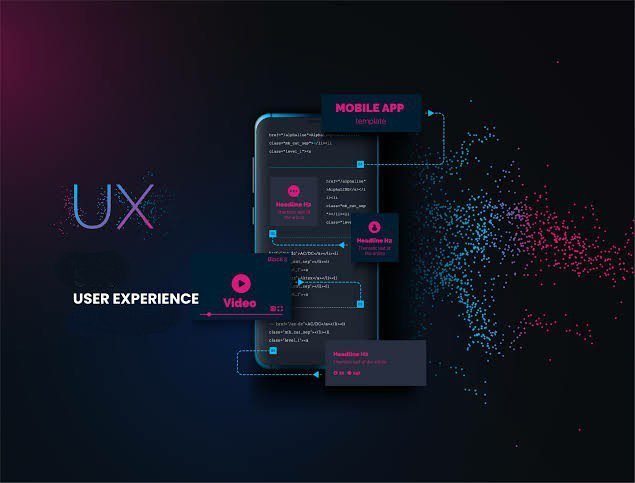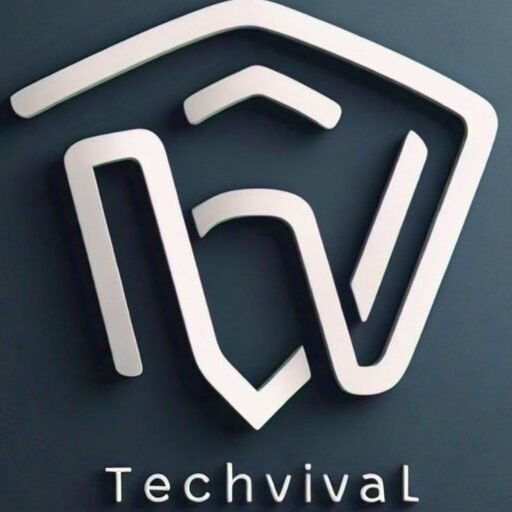
UX Design Professional Course - Google Certified
LAUNCHING SOON
This is your path to a career in UX design. In this program, you’ll learn in-demand skills that will have you job-ready in less than 6 months. No degree or experience required.
WHAT YOU WILL LEARN
-
Follow the design process: empathize with users, define pain points, ideate solutions, create wireframes and prototypes, test and iterate on design.
-
Understand the basics of UX research, like planning research studies, conducting interviews and usability studies, and synthesizing research results.
-
Apply foundational UX concepts, like user-centered design, accessibility, and equity-focused design.
-
Create a professional UX portfolio that includes 3 end-to-end projects: a mobile app, a responsive website, and a cross-platform experience.
SKILLS YOU WILL GAIN
- User Experience (UX)
- UX Research
- Wireframe
- Prototype
- User Experience Design (UXD)
- Usability Testing
- mockup
- Figma
- Adobe XD
- UX design jobs
About this Professional Course
Prepare for a career in the high-growth field of UX design, no experience or degree required. With professional training designed by Google, get on the fast-track to a competitively paid job.
There are currently 99,000 U.S. job openings in UX design with a median entry-level salary of $92,000.¹
User experience (UX) designers focus on the interaction that users have with products, like websites, apps, and physical objects. They make those everyday interactions useful, enjoyable, and accessible.
Over 7 courses, gain in-demand skills that will prepare you for an entry-level job.
You will create designs on paper and in digital design tools like Figma and Adobe XD. By the end of the certificate program, you will have a professional UX portfolio that includes three end-to-end projects, so that you’re ready to apply for jobs. Upon completion, you can directly apply for jobs with Google and over 150 U.S. employers, including Walmart, Best Buy, and Astreya.
75% of Google Career Certificate Graduates in the United States report an improvement in their career trajectory (e.g. new job or career, promotion or raise) within 6 months of certificate completion²
¹US Burning Glass Labor Insight Report salary data (median with 0-5 years experience) and job opening data. Data for job roles relevant to featured programs (4/01/2021 - 3/31/22).
² Based on program graduate survey responses, United States 2021
Applied Learning Project
This program includes over 200 hours of instruction and hundreds of practice-based activities and assessments that simulate real-world UX design scenarios and are critical for success in the workplace. The content is highly interactive and developed by Google employees with decades of experience in UX design.
You’ll learn how to complete the design process from beginning to end, including:
Empathizing with users; Defining user pain points; Coming up with ideas for design solutions; Creating wireframes, mockups, and prototypes; Testing designs through usability studies; Iterating on designs based on feedback.
Through a mix of videos, readings, assessments, and hands-on activities, you’ll learn in-demand design tools, Figma and Adobe XD. You’ll even create a portfolio that includes three projects to share with potential employers to showcase the skills you learned in this program.
Learn concrete skills that top employers are hiring for right now.
Curriculum
- 31 Sections
- 149 Lessons
- 100h Duration
Foundations of User Experience (UX) Design
WEEK 1 - Introduction to UX Design
- Welcome to the Google UX Design Certificate
- Begin the Google UX Design Certificate
- Introduction to Course 1: Foundations of User Experience Design
- Welcome to Course 1
- Your UXD Portfolio Roadmap
- Helpful tips to get started
- Introduce yourself
- Michael - Get started in UX design
Get to know user experience design
- Welcome to week 1
- The basics of user experience design
- Jobs in the field of user experience
- User experience careers
- The product development life cycle
- The product development life cycle
- Design for a good user experience
- Characteristics of a good user experience
- Activity Exemplar: Identify good user experience
- Discussion Prompt - Examine user experiences in your life
Explore jobs in user experience
- Job responsibilities of entry-level UX designers
- Dane - A day in the life of an entry-level UX designer
- Specialists, generalists, and T-shaped designers
- Erika - Generalist or specialist designer
- The role of a beginner UX designer
- Work in a cross-functional team
- Interact with cross-functional teammates
Understand the types of companies that hire UX designers
- UX design jobs at different types of companies
- The influence of company size and industry
Pursue a career in UX design
- From certificate to career success
- Juan - A UX design career journey
- Mike - A UX design career journey
WEEK 1 Review
- Wrap-up: Introducing user experience design
WEEK 2 - Thinking Like a UX Designer
Get to Know the User
- Welcome to week 2
- User-centered design
- Who are my users?
- Assistive technology
- Elise - The importance of assistive technology
- Akhil - Thinking about users new to technology
Get to know UX design best practices and trends
- Design Thinking: A UX design framework
- Universal design, inclusive design, and equity-focused design
- The importance of equity-focused design
- Get to know platforms
- Design for different platforms
- Designing cross-platform experiences
WEEK 3 - Joining Design Sprints
- Learning Objectives
- Welcome to week 3
- Introduction to design sprints ###
- Five phases of design sprints
- Benefits of design sprints
- Discussion Prompt - Design sprint experience
Plan design sprints
- Plan design sprints
- The design sprint brief
Participate in design sprints
- An entry-level designer’s role in a sprint
- Organize a design sprint html code embeded
- Jason - All about design sprints
Reflect on design sprints
- Design sprint retrospectives
- Common retrospective questions
- Discussion Prompt - Group work experience
- Week 3 Review - Wrap up Week 3
WEEK 4 - Integrating Research into Design Process
- Week Intro
Understand the role of research in design
- Integrating research into the design process
- Emily - The power of UX research
- Introduction to UX research
- Learn more about UX research
- Christie - Design and the importance of feedback
- Discussion - Share your experience of user research
Explore UX research methods
- Choose the right research method
- Understand benefits and drawbacks of research methods
- Learn more about research methods
- Choose the best research method - html code edit
- Craig - My journey to UX
Identify biases in UX research
- Identify types of bias in UX research
- Learn more about bias in UX research
- Deana - Identify bias in UX research
- Discussion - How to reduce research bias in user research
- Week 4 Review - Wrap-up: Integrating research into the design process
Course 1 Review
- Congratulations on completing Course 1: Foundations of User Experience Design
- Discussion prompt - Share your experience
- Start the next course
COURSE 2: Start the UX Design Process: Empathize, Define, and Ideate
- About this Course
- Introduction to Course 2: Empathize, Define, and Ideate
- Introduction to the portfolio project
- Choose your portfolio project prompt
- Collaboration and feedback on portfolio projects
Empathize with users
- Empathize with users
- Understand empathy in UX design
- Optional: Recruit interview participants
- Determine research goals and questions
- Activity: Define your research goals and questions
- Activity Exemplar: Define your research goals and questions
- Optional: Find and recruit interview participants
- Optional: Prepare for user interviews
- Optional: Interviewing users
- Optional: Conduct user interviews
- Activity: Build empathy with users to inform your research
- Activity Exemplar: Build empathy with users to inform your research
Optional: Learn about empathy maps
- Empathy Maps
- Build an empathy map
Identify user pain points
- Identify user pain points
- Optional - Case studies: Products that address pain points
- Test your knowledge on user pain points
Create personas
- Understand personas
- Learn more about personas
- Practice Activity: Create personas for the CoffeeHouse project
- Exemplar: Create personas for the CoffeeHouse project
- Wrap-up: Empathizing with users and defining pain points
- Peer-graded Assignment: Weekly challenge 1: Create personas for your portfolio project
COURSE 2 - WEEK 2: Creating User Stories and User Journey Maps
- About
- Welcome to week 2 of Course 2
- Craft user stories
- Learn more about user stories
- Practice Activity: Craft user stories for the CoffeeHouse project
- Activity Exemplar: Craft user stories for the CoffeeHouse project
- Activity: Craft user stories for your portfolio project
- Activity Exemplar: Craft user stories for your portfolio project
- Consider edge cases
- Ayan - Real world example of edge cases
Create a user journey map
- Create a user journey map
- Optional - User journey map slides
- Practice Activity: Create user journey maps for the CoffeeHouse project
- Activity Exemplar: Create user journey maps for the CoffeeHouse project
Consider accessibility
- Consider accessibility when empathizing
- Consider accessibility during user research
- Understand the curb cut effect
- Design accessible experiences HTML CODE
- COURSE 2 : WEEK 2 REVIEW - Wrap-up: Creating user stories and user journey maps
- Peer-graded Assignment: Weekly Challenge 2: Create a user journey map for your portfolio project
COURSE 2 - WEEK 3: Defining User Problems
- About week 3
- Welcome to week 3
- Create problem statements
- Define problem statements
- Practise quiz: Self-Reflection: Problem statements and the 5 Ws framework
- Define hypothesis statements
- Define hypothesis statements
- Practice Activity: Build a problem statement and hypothesis statement for the CoffeeHouse project
- Activity Exemplar: Build a problem statement and hypothesis statement for the CoffeeHouse project
- Practice Quiz: Activity: Build a problem statement for your portfolio project
- Activity Exemplar: Build a problem statement for your portfolio project
Create a value proposition
- Determine a value proposition
- Determine a value proposition
- Practice Quiz: Self-Reflection: Create a value proposition for your portfolio project
Optional - Explore the influence of psychology in UX design
- Understand human factors
- Explore psychology principles that influence design
- Practice Quiz: Test your knowledge on how psychology and human factors influence design
- Week 3 review : Wrap-up: Defining user problems
- Weekly Challenge 3: Define user problems
COURSE 2 : WEEK 4 - Ideating Design Solutions
- About Week 4 of Course 2: Ideating Design Solutions
- Welcome to week 4 of Course 2
- Understand design ideation
- Learn more about design ideation



